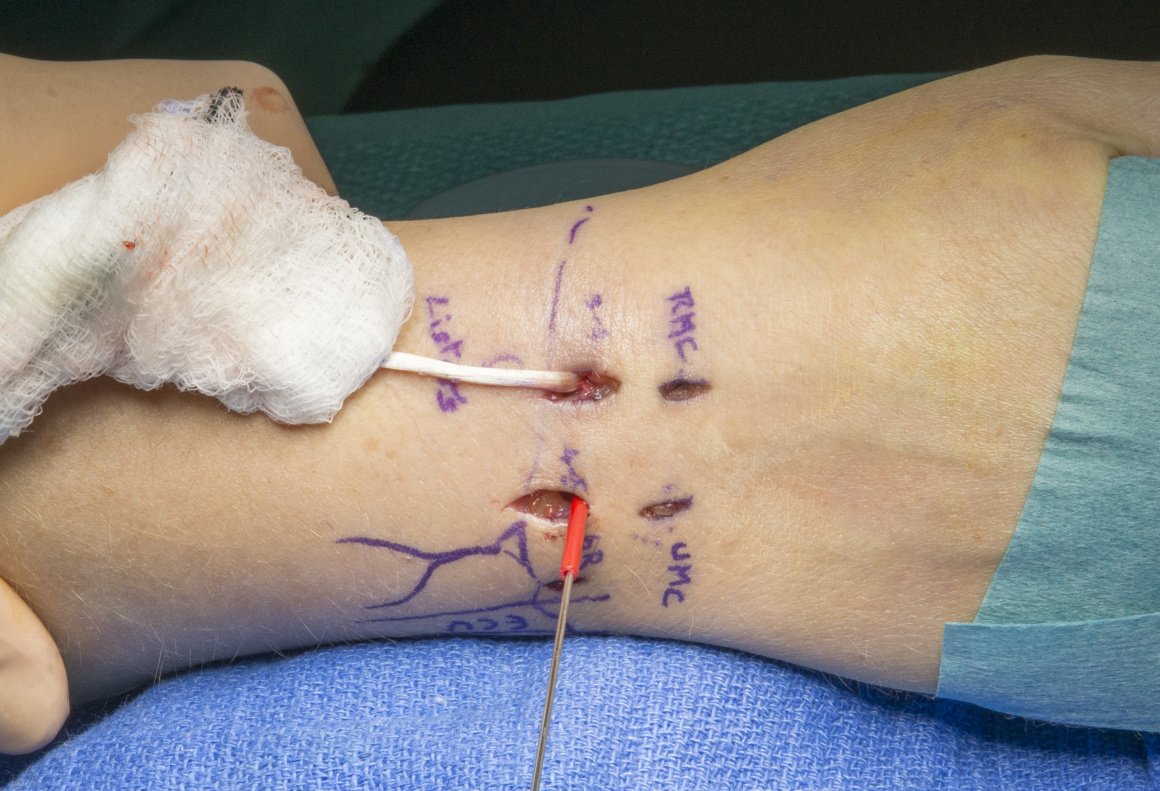Modified Corella (arthroscopic assisted) scapho-lunate ligament reconstruction with Arthrex Bio-tenodesis screw
Overview

Subscribe to get full access to this operation and the extensive Upper Limb & Hand Surgery Atlas.
Learn the Modified Corella (arthroscopic assisted) scapho-lunate ligament reconstruction with Arthrex Bio-tenodesis screw surgical technique with step by step instructions on OrthOracle. Our e-learning platform contains high resolution images and a certified CME of the Modified Corella (arthroscopic assisted) scapho-lunate ligament reconstruction with Arthrex Bio-tenodesis screw surgical procedure.
This is a detailed step by step instruction through a Modified Corella arthroscopic assisted reconstruction of the scapho-lunate interosseous ligament (SLIL).
The operation is performed to restore carpal mechanics following a SLIL injury and often subsequent attrition of the secondary stabilisers leading to a dorsal-intercalated segment instability (DISI). SLIL injuries over 4-6 weeks old are often very difficult to repair primarily and may require reconstruction if symptoms persist. If the wrist remains symptomatic despite appropriate rehabilitation, splintage and analgesia therapy, surgery may be required.
This can be the case in Geissler grade 3 or 4 ligament tears seen arthroscopically and may also be the operation of choice in grade 1 scapho-lunate advanced collapse (SLAC) in conjunction with a radial styloidectomy.
The operation uses a third to a half of the flexor carpi radialis (FCR) tendon which is passed through the scaphoid, across to the lunate and then dorsal to volar though the lunate and onto the volar radio-scapho-capitate (RSC) ligament. This aims to reconstruct the volar secondary stabiliser of the scapho-trapezial-trapizoid ligament (STT), the dorsal and volar limbs of the SLIL. The operation is performed as a daycase procedure and the patient is placed in cast for 2 weeks following the procedure and then a splint with focussed rehabilitation with a specialist therapist.
Patients often return to light work at 8 weeks, heavy work at 3 months and continue to improve up to a year post-operation.
Readers will also find of use the following OrthOracle techniques : Diagnostic Wrist Arthroscopy (using Acumed ARC Tower )
Compared to the open Modified Brunelli procedure, which is commonly the treatment choice for SLIL reconstruction, the Modified Corella is certainly a more complex procedure and requires arthroscopy skills in addition to wrist surgery skills. There is however little of the procedure which is wholly arthroscopic and therefore it is better termed arthroscopic assisted. The rationale behind this surgery compared with the Modified Brunelli is 2 fold. Firstly, with no large wound in the dorsal wrist capsule, the range of movement in the published series appears to be better post-operatively than with the Modified Brunelli. Secondly the use of the interference screws in the scaphoid and lunate, lock the ligament reconstruction and avoid it slacking off. Having performed both procedures I get the impression that the scaphoid is more firmly pulled and fixed to the lunate with the Corella compared to the modified Brunelli. One note of caution is that the Corella should not be used if there is any instability between the lunate and triquetrum as it is liable to exacerbate this instability by stabilising just the radial side of the proximal carpal row.
The original description of this operation and report of its originators series is published in Hand Clinics:
Corella F, Del Cerro M, Ocampos M, Simon de Blas C, Larrainzar-Garijo R. Arthroscopic scapholunate ligament reconstruction, volar and dorsal reconstruction. Hand Clin. 2017 Nov; 33(4):687-707.
Author: Mr Mark Brewster FRCS (Tr & Orth)
Institution: The Royal Orthopaedic Hospital, Birmingham, UK.
Clinicians should seek clarification on whether any implant demonstrated is licensed for use in their own country.
In the USA contact: fda.gov
In the UK contact: gov.uk
In the EU contact: ema.europa.eu



















